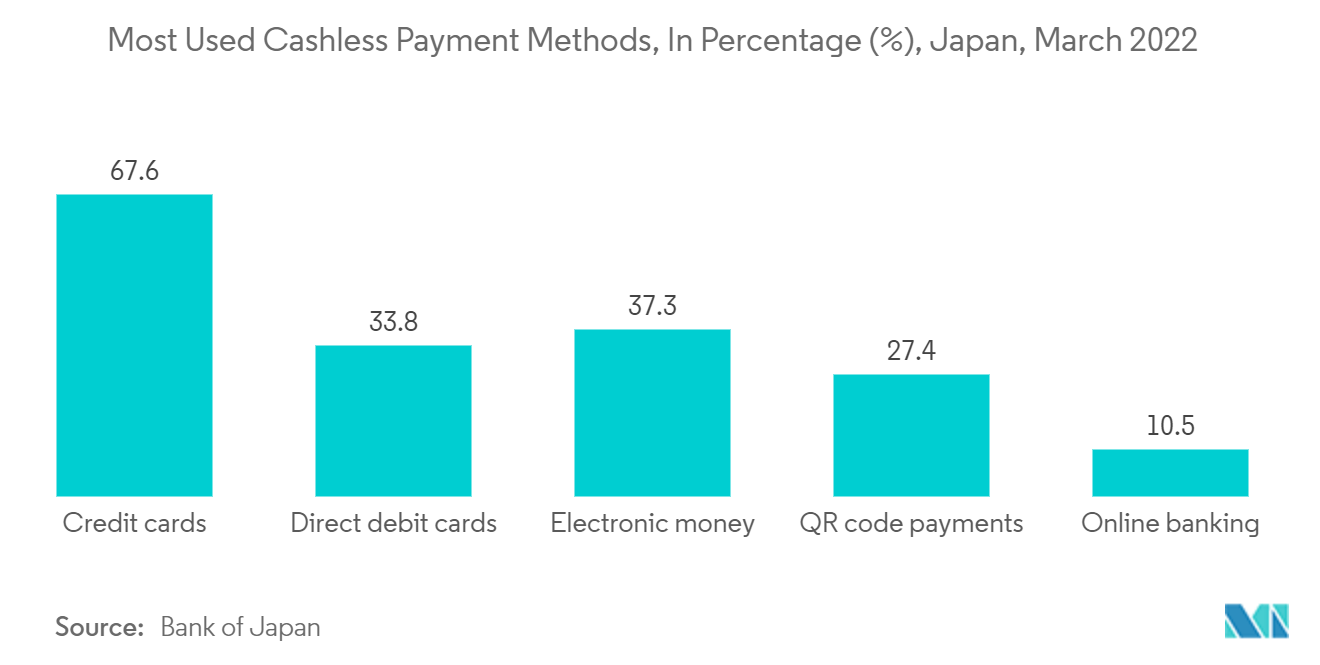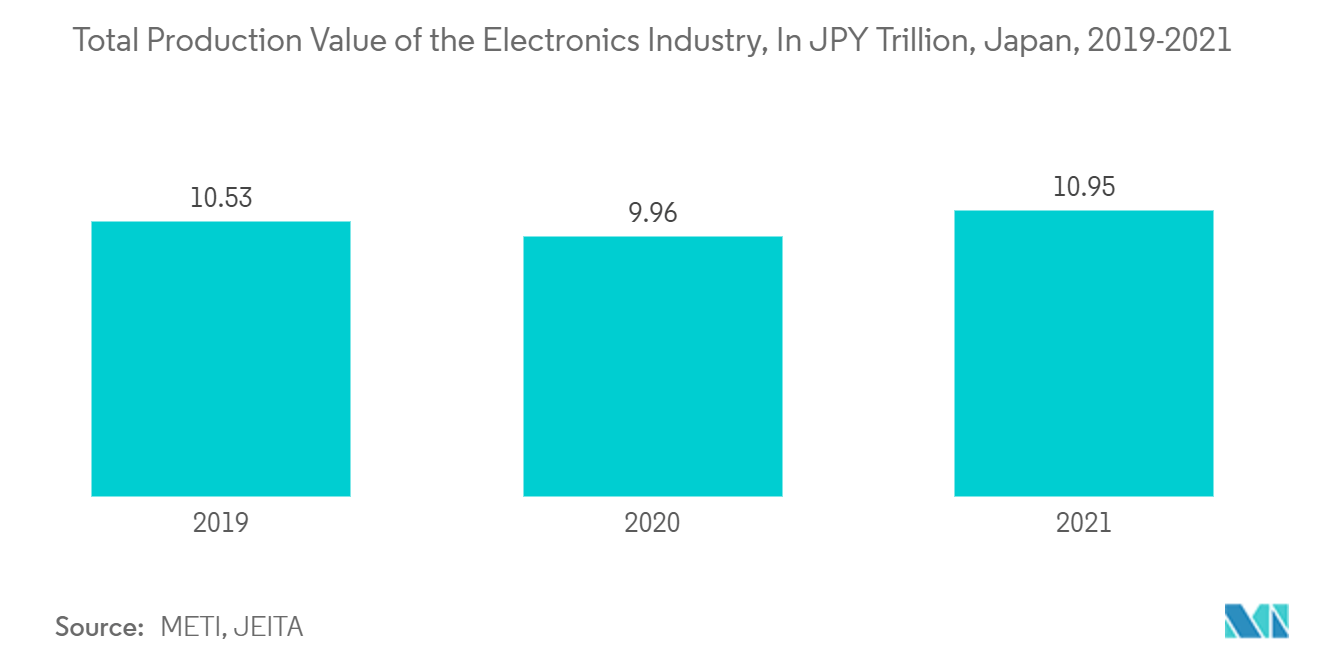Market Trends of Japan E-commerce Industry
This section covers the major market trends shaping the Japan E-commerce Market according to our research experts:
Rising Adoption of Card Payments and M-commerce to Boost the E-commerce Market
- When it comes to online shopping, Japanese shoppers prefer card payment mainly through credit cards because of the ease of convenience various E-commerce platforms provide on card payments, such as easy checkout solutions, discounts, gift vouchers, and additional rewards and benefits. Visa, Mastercard, and JCB are the most widely used and accepted cards in online shopping in Japan. These type of easy-to-go payment solutions is further expected to boost the E-commerce Market.
- Furthermore, many E-commerce companies further provide the option for saving the card feature, which is time-saving for further online transactions in the future. However, digital payment solutions are rising at a faster rate in the region, with many E-commerce market Players launching wallets such as Rakuten Pay. Still, card payment will remain the preferred option for E-commerce in the coming years.
- Moreover, with high mobile and internet penetration, Mobile commerce is rising rapidly in the region. As reported by International Telecommunication Union, there were 152.03 mobile subscriptions registered for every 100 people in 2020 in Japan. This has led to the rise of M-commerce in the region and further drives the E-commerce market.
- The trend of M-commerce has increased in the region over the past few years due to the various benefits associated with M-commerce. With sustained growth in mobile transactions in Japan and in-app purchases provided by most E-commerce companies such as Amazon Japan and Yahoo! Japan, and Rakuten, M-commerce is further expected to grow over the forecast period.

Consumer Electronics Segment Hold the Largest Share
- The consumer electronics product segment holds the largest share in the E-commerce market in Japan owing to the enhanced digital landscape in Japan, ease of convenience offered through online sales in terms of review and return policies, technology-savvy consumers, and the increasing focus of E-commerce companies on establishing and expanding their digital services.
- The data reported by the Ministry of Economy, Trade, and Industry (METI) and the Japan Electronics and Information Technology Industries Association (JEITA), the total production value of the electronics industry in Japan reached close to JPY 11 trillion in 2021. The value was JPY 10.53 trillion in the year 2019. The industry encompasses consumer electronic equipment, industrial electronic equipment, as well as electronic components and devices.
- Japan's twice-yearly bonus culture for salaried people boosts E-commerce sales. The summer bonus, in particular, is associated with an uplift in luxury goods, travel, and consumer electronic purchases. Moreover, the major players in the region, which hold a significant amount of share, offer various discounts and offers on the purchase of consumer electronics during these sales.
- As reported by the Ministry of Economy, Trade, and Industry (METI), E-commerce sales are high for domestic electrical appliances, AV equipment, and peripherals and PCs because, with domestic electrical appliances, AV equipment, and peripherals and PCs, the product specifications are clear, and it is easy to understand the details and features of the products by researching (searching on the internet for) them in advance. In this regard, they are highly compatible with E-commerce. The aforementioned factors are further expected to drive the E-commerce market over the forecast period.


